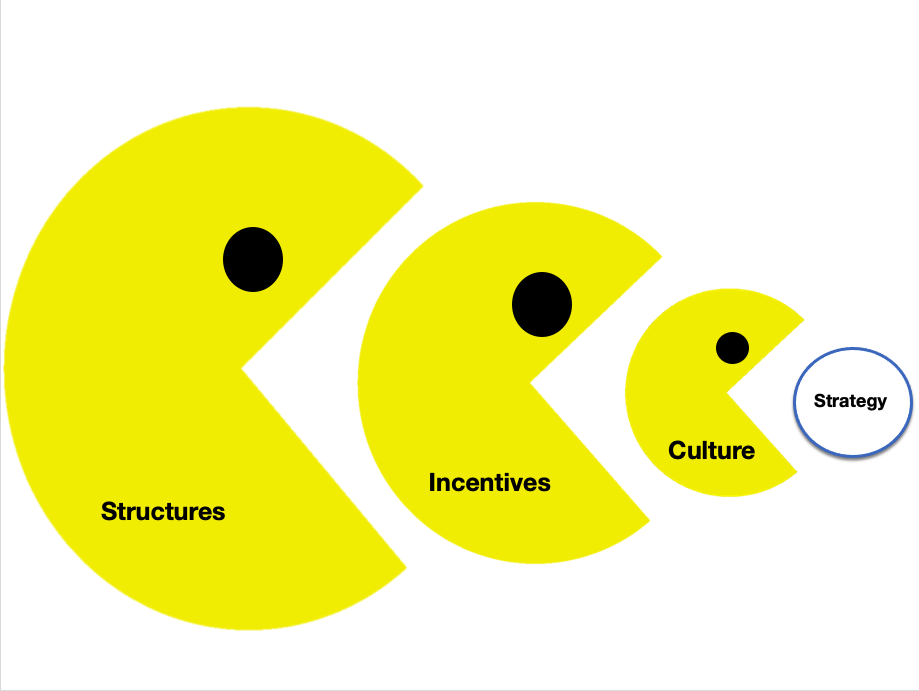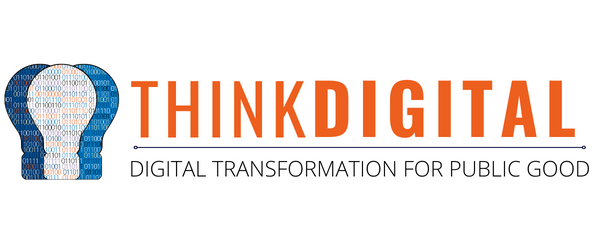The “Pac-Man” model for rethinking how government works
May 31, 2022
By Ryan Androsoff, CEO & Founder, Think Digital
Note: this article was originally published as part of Think Digital’s role as Knowledge Partner for the 4th Government Services Forum held at the World Government Summit 2022 during Expo 2020 Dubai
Governments around the world are facing unprecedented change. The digital revolution has upended expectations around service delivery in all sectors of society. The COVID-19 pandemic forced both citizens and government employees into more fully online modes of interaction than ever before, and it is very likely that much of that change in how we work and receive services will be “sticky”. Put simply, there is no going back.
The challenge for governments however is how to evolve their operating model to be successful in today’s digital reality. We are seeing a broad consensus emerge in the digital government movement globally that public sector organizations need to move towards more agile, human-centered ways of developing and delivering services to citizens and businesses. However, we are also seeing that efforts to bring in these new ways of approaching service delivery are coming up against systemic barriers within their own organizations. In our experience, governments around the world are often being held back by laws, policies, and internal processes that were developed with a very different set of assumptions on what constitutes a successful public service organization. Without focus and effort on changing the ways in which government organizations work from the inside-out, efforts to build the next generation of client-centric services will face continued friction.
Frequently the starting and ending point for attempts to modernize how government delivers services for the digital age is the development of a digital services strategy. This is not to suggest that strategies are not useful. If done well, the process of developing them can serve to engage key stakeholders and provide a common vision to strive towards. Too often however we have seen completed strategy documents spend more time collecting dust on a shelf rather than inspiring tangible results. Why is this?
The familiar adage of management consultants is that “culture eats strategy for breakfast”. This is without a doubt true, and the best digital services strategy will not gain traction if the culture of the organization does not align with its aims. Strategy without culture change is doomed to fail. However, this is not the entire story. Culture change can be elusive, and too often is dependent upon the personal efforts of a small number of inspired senior leaders to drive it forward. While this can be effective – indeed necessary – in the short-term to build momentum, it rarely leads to sustainable change. The reason is that organizational culture is like an elastic band – unless there is something pulling on it, naturally it wants to snap back to its previous shape. Ambitious change initiatives can often fall victim to the reality that leaders may move on to other organizations or by necessity must turn their attention to other priorities over time.
So how can we provide that pull on our organizational culture in a more sustainable way to enable successful implementation of a digital transformation strategy? We call this our “Pac-Man” model of organizational change. It suggests that if culture eats strategy, then incentives eat culture, and structures eat everything else.

Incentives are focused on how people are rewarded or disciplined in an organization. What gets someone promoted or demoted? What types of behaviours attract more resources to a team or see them taken away? What gets measured in the organization, including at the individual level through tools such as annual performance assessments?
Structures deal with how decisions are made in an organization. What is the process for allocating budget or human resources? What are the governance and project gating processes? Who gets to make these decisions? What laws, regulations, or policies are in place that constrain or influence how decisions are made?
When embarking on efforts to evolve government organizations to deliver client-centric services, issues around institutional structures and incentives cannot be ignored. Indeed, a good digital services strategy must take an honest look at existing institutional structures and incentives and propose tangible, actionable changes that will help align the culture of the organization. This can be difficult and unglamorous work. However, it may be the single most important area for government leaders to put their focus on if they want to be successful in leverage the latest technological advancements to enable the next generation of client-centered services.

Love this Ryan. Certainly formed the backdrop to many of our conversations over the years. I sent it over to my DG, i have just recently taken a position as a Strat Advisor at PSPC and i hope to provide some valuable understanding and learning about how to develop strategies for change that actually have a chance of delivering sustained change to the organisation and ultimately enable the organisation to achieve its purpose and have a positive impact on its stakeholders.